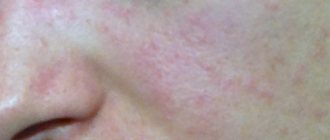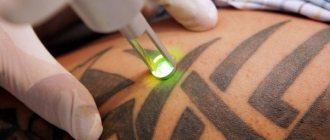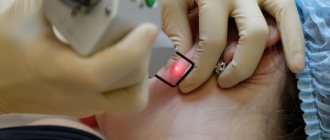Content
- Types of surgical treatment for bunions
- Common techniques
- How is a bunion removed?
- Contraindications
- Preparing for surgery
- Approximate cost of the operation
- Rehabilitation
Conservative treatment of this common pathology is effective only at the initial stage of the disease, when the thumb deviates slightly (up to 15 degrees) outward, there is no pain yet, and the lump itself looks like a small tubercle.
If a bunion appears on the leg, timely contact with an orthopedist allows you to correct the deformity using conservative methods
Unfortunately, not all people pay attention to changes in the foot before pain symptoms appear, and the doctor examining the patient is forced to state that the situation is advanced and only removal of the bone on the big toe can correct the pathology (the operation allows not only to get rid of pain and prevent the progression of the disease, but also to restore the arch of the foot).
Treatment of foot deformities
One of the main areas of foot surgery is reconstruction for various foot deformities. These pathologies can be congenital or acquired, occur when wearing uncomfortable shoes or after injuries. The development of the disease is influenced by the patient’s weight and age, as well as the presence of accompanying symptoms. Surgical treatment of foot deformity is a radical method. In the early stages, when such diseases do not cause serious complications and do not interfere with the patient’s daily life, doctors try to use conservative treatment methods. However, if the pathology progresses and cannot be corrected, it is better to undergo surgery.
Types of surgical treatment for bunions
The operation to remove a bunion is carried out after additional diagnostics, which allows you to accurately assess the degree of deformation and identify concomitant pathologies and diseases. The choice of surgical technique (there are about 100 different methods) is influenced by:
- type of deformation;
- the condition of the bones and soft tissues of a particular patient;
- presence of somatic diseases.
Since low-traumatic methods and modern anesthetics are currently used in most cases to remove bunions, the age of the patient does not affect the choice of surgical procedure.
Possible application:
- Osteotomy, which is used in most cases as the most effective method. With any type of osteotomy, during surgery, the tissue is cut over the deformed joint, the bone is intersected (transversely closer to the nail or at its other end, Z-shaped or along the main phalanx), bone fragments are installed in the correct position and fixed with staples or a special screw.
- Arthrodesis. This type of surgery is performed in very rare cases, since the main purpose of the operation is to create a fixed joint that does not allow the foot to be completely restored. The indication for this type of operation is a severely damaged thumb joint, which cannot be returned to the correct position using osteotomy. During the operation, the metatarsophalangeal joint is removed, and the bones are connected to each other. The disadvantage of this method is the pain at the fusion site that occurs after exercise, as well as the need to constantly wear orthopedic shoes.
- Resection arthroplasty, in which part of the articular surface is removed. In this case, a cavity remains between the parts of the bone, which is filled with connective tissue during the healing process (thus forming a false joint). This operation does not provide complete restoration of foot function.
- Correction of the transverse arch of the foot. With this type of surgery, it is not the joint and bone that are corrected, but the soft tissue around the problem area. During the operation, the tendons of the adductor hallucis muscle are transplanted from the big toe to the 1st metatarsal bone, the muscle no longer holds the big toe in a deflected position, the angle between the bones of the foot changes, and the arch of the foot restores its normal shape. The method is effective in the early stages of the disease.
- Exostectomy, in which the cone itself (part of the head of the metatarsal bone) is excised, as well as the soft tissue located around the affected joint. The gait after the operation is restored, the pain is eliminated, but relapses are possible.
Intervention for bone fractures
The foot consists of a large number of small bones. They carry a huge load and absorb shock when walking. Unlike many other areas, they are not sufficiently protected from fractures, so such injuries are common.
It is necessary to treat fractures surgically in several cases:
- the fracture is open, the fragments have been displaced, it is necessary to compare them and restore the integrity of the surrounding tissues;
- closed fracture with displacement of fragments of small bones;
- there was a displacement of the articular surfaces of the bones.
During the operation, the surgeon combines fragments of the damaged bone and fixes them in the anatomically correct position. For this, special pins and other metal structures are used. After surgery, the patient can bear weight on the leg, as opposed to healing under a cast.
Surgery for hallux valgus is the only and very effective treatment option.
Common techniques
Surgery on the bunion of the big toe with the intersection of the bone is most often performed using the method:
- Scarf osteotomy. Used for moderately severe hallux valgus deformity. Allows you to shift in the longitudinal direction and rotate part of the head of the metatarsal bone, lengthen or shorten the first metatarsal bone, shift bone fragments, which allows you to achieve greater proportionality of the joint and reduce the load on the joint and the inside of the foot. The technique gives good results in combination with soft tissue correction.
- Austin/Chevron osteotomy, in which a V-shaped transection of the first metatarsal is performed. Used in cases of minor valgus deformity, it allows the head of the metatarsal bone to be displaced by 1/2 of its width (if the displacement is more than 1/2 of the width of the bone, the stability necessary for bone fusion may not be enough).
- Akin osteotomy, which is performed on the main phalanx (at the level of the proximal part of the tubular bone adjacent to the epiphyseal plate). Accompanied by mandatory manual correction of hallux valgus. The bone is divided parallel to the metatarsophalangeal joint and the nail bed of the big toe, and the wedge-shaped fragment is removed.
Various methods of cutting the bone when removing a bunion.
Surgery to remove a bunion on the big toe can also be performed:
- According to the Weil method (oblique osteotomy of the small metatarsal bones). Allows you to move the bones towards the center and in the longitudinal direction, returns the head of the metatarsal bone to its normal position and helps eliminate hammertoe deformity.
- According to the Schede-Brandes method (marginal resection of the medial bone outgrowth (exostosis)). During the operation, the bone on the lateral surface of the 1st metatarsal bone and the proximal part of the main phalanx of the big toe are removed, a plaster splint is applied to fix the foot in a certain position, and then traction is performed on the nail phalanx of the big toe for 2 weeks.
A good cosmetic result is obtained by surgery to remove bunions using the Wreden-Mayo method (consists in removing the head of the 1st metatarsal bone along with the bump), however, due to the elimination of the main supporting platform of the foot when walking, a violation of the supporting function of the foot is observed after the operation.
Removal of the bunion on the big toe using the Chalkin method (intersection of the bone with rotation of the head of the 1st metatarsal bone) and trapezoidal wedge resection of the 1st metatarsal bone using the Bohm and Reverden method do not eliminate the medial deviation of the 1st metatarsal bone and do not restore the arch of the foot, therefore, they are often accompanied by relapses.
The patient may be offered reconstructive surgery aimed at correcting several components of the foot deformity:
- The method of Kramarenko and Boyarskaya, during which, after surgery using the Schede-Brandes method, to eliminate the medial deviation of the 1st metatarsal bone, a transverse osteotomy is performed distal to the metatarsocuneiform joint, and a graft formed from previously removed parts of the bone is hammered into the resulting wedge-shaped gap. A transverse ligament of the foot is formed from Mylar tape, which holds the 1st metatarsal bone in the correct position (the tape is sutured to the edges of the capsules of the 1st and 5th metatarsophalangeal joints). After surgery, a plaster cast is applied to the foot for 4-5 weeks.
- Operation Korzh and Eremenko, in which the bone does not intersect, since the defect is eliminated by removing the 1st metatarsocuneiform joint. The transverse ligament of the foot is formed from the tendon of the long extensor of the 4th toe.
- An operation using the CITO method, which is accompanied by the formation of a transverse ligament of the foot from a Mylar tape in the form of a figure eight according to Klimov.
Performing an operation using traditional surgical methods.
If necessary, endoprosthetics is performed, in which the deformed joint is completely removed and replaced with an artificial one.
How is a bunion removed?
Previously, surgery to remove a bunion on the big toe was quite traumatic (the bunion was removed, the joint was secured with staples and pins), so complications often arose, and the rehabilitation period was long. Due to the imperfection of previously used techniques, reviews of the operation to remove bunions were rather negative, since the high level of trauma accompanying the surgical intervention caused pain in patients for a long period, and relapses were often observed.
Currently, bunions can be removed with minimal trauma using:
- Minimally invasive techniques in which the incision does not exceed 3 mm (with significant deformation - 10 mm). Surgical manipulations (intersection of the bone and displacement of its parts) are carried out through this small incision under X-ray control. The advantages of minimally invasive osteotomy include a short rehabilitation period and almost invisible scars, pain and the risk of complications are minimal. Minimally invasive operations do not require general anesthesia (local or epidural is used), but can only be used for mild deformities of the thumb.
- A laser that allows you to remove bone tissue in the thinnest layers, thus maintaining joint mobility. The rehabilitation period is shorter than when using a traditional surgical kit (drill, knitting needle, screwdriver, clamp). Laser removal of bunions is used if the patient does not have other foot deformities or complications of hallux valgus.
Minimally invasive and traditional methods that are used for various types of hallux valgus.
Access during the operation can be:
- open (the tissue is cut to the bone using a scalpel, the surgeon, thanks to a visual review, controls the correction process);
- closed (manipulation is carried out through a small incision, control is carried out using x-rays).
Laser bunion removal involves grinding down the bunion on the foot until it is completely aligned with the lateral surface of the foot, which is carried out through a small incision. To remove a bone using a laser, resurfacing is accompanied by:
- exostectomy;
- osteotomy;
- resection arthroplasty.
The advantages of laser removal of hallux valgus include:
- disinfection of the wound under the influence of a laser, which minimizes the risk of infection;
- minimal blood loss due to the small size of the incision through which manipulations are performed;
- no effect on surrounding tissues;
- fast recovery;
- shorter operation time (takes 1 hour, while removal of a lump using traditional surgical methods takes about 2 hours);
- no need to wear a cast after surgery.
The most minimally traumatic and effective method is to remove a bone on the thumb using a laser.
Removing a bunion using any method consists of several stages. Most often during the operation:
- An incision is made on the inside of the big toe phalanx.
- A capsulotomy is performed (dissection of the capsule of the first metatarsophalangeal joint).
- Excision of the bone outgrowth (bump removal) is performed.
- The first bone of the metatarsus is sawed (an osteotomy is performed).
- The surgeon moves fragments of the metatarsal bone, changing the axis of the deformed area.
- The bone is fixed with titanium screws or staples.
- The capsule and incision are sutured.
- A sterile bandage is applied to the access site.
- A fixing bandage or plaster is applied to the foot (depending on the type of operation).
Titanium screws are not removed if there is no discomfort.
Causes of long toes
1) Genetics (heredity) is the most common cause.
2) Progressive valgus deformity of the big toe, as a rule, manifests itself in the relative shortening of the first ray and, accordingly, the lengthening of the second ray of the foot. Although the absolute length of the bones does not change. It’s just that the first metatarsal bone deviated to the side (primus virus). In this case, of course, it is necessary to correct the deformity of the first metatarsal bone and then the relative length of the first toe (ray) will be normal.
3) Injuries to the flank of the fingers and metatarsals can cause shortening of one of the rays.
4) Developmental anomaly
The most common reasons for seeking help are:
• Pain on the tip of the finger • Painful calluses of the fingers • Difficulty in choosing shoes • Congenital anomalies of the feet • Acquired foot deformation • Aesthetic dissatisfaction with your foot
Contraindications
Although leg surgery to remove a bone is usually performed using low-traumatic techniques, there are a number of contraindications to its implementation. The operation is contraindicated for:
- thrombosis, which is accompanied by inflammation of the veins and bleeding disorders;
- diabetes mellitus, obesity;
- cardiovascular failure;
- poor circulation of foot tissues;
- pathologies of the musculoskeletal system.
Removing a bunion with a laser has virtually no contraindications, but a preoperative examination is necessary before the procedure.
Preparing for surgery
Before removing bunions, it is necessary to undergo a thorough diagnosis to identify all pathologies of the foot - x-rays of the foot from different sides or magnetic resonance imaging.
In addition to removing the big toe bunion, surgery may include eliminating hammertoes in other toes, etc.
As part of the preoperative examination, the patient is sent for tests:
- blood (general, biochemical, sugar, clotting);
- urine (general analysis);
- to detect hepatitis and HIV;
- ECG;
- fluorography.
Alternative Treatments
Often people who are faced with such a problem ask themselves first of all the question: how to remove a bunion using folk remedies? It should immediately be noted that using alternative medicine it is impossible to completely correct this kind of deformation. Bunions on the feet cannot be removed using folk remedies, but such recipes significantly help relieve pain and eliminate redness.
For this purpose, various means are used, and the most popular can rightly be called iodine. It is used in conjunction with other excipients. For example, you can use grated soap, which is used to massage the skin in the “bones” area, and then thoroughly rinse off its remnants with water. Afterwards, a mesh is drawn on these places with iodine. In addition, “bumps” on the legs can be smeared with camphor oil and then with iodine. Before such a procedure, it is advisable to steam your feet and dry them with a towel.
Propolis can be used with the same success: it is heated in the hands until soft, and then applied to the protruding “bones” and the propolis is fixed with a dry bandage. Ordinary potatoes are also an excellent remedy: they are used raw (then a gruel of grated tubers is applied to the “cones”) or a decoction is used. In this case, the pan is filled 2/3 with peelings and filled with water. Next, they are boiled for 15 minutes, after which the broth is poured into a bowl of warm water. Then your feet soak in this bath for about half an hour, and if you carry out this procedure several times a day, then after a couple of weeks the “bones” will stop bothering you.
In addition, you can also use ointment. To prepare it, a fresh egg with a white shell is poured with vinegar and left alone for several weeks. As soon as the egg has dissolved, the remains of its shell are thrown away, and 1 tbsp of melted lard and 10 g of turpentine ointment are added to the egg itself. This ointment is usually applied to the “bones” every other day, alternating with the use of iodine. In addition, you can also use honey heated in a water bath as a rubbed ointment.
During therapy using folk recipes, you can also take internal medications. For example, decoctions and tinctures of medicinal herbs known for their diuretic effect. These can be birch buds, horsetail, lingonberry and bearberry leaves. However, no matter which prescription a person prefers, it must be previously agreed with his own doctor.
Approximate cost of the operation
Since free hallux valgus surgeries in public institutions require a referral from an orthopedist and a wait in line for elective surgery, patients are often interested in how much it costs to remove a bunion.
The cost of the operation is influenced by the qualifications of the doctor, the methodology, the status of the clinic (private, municipal), the equipment and drugs used. On average, the price varies from 200 to 1000 dollars (in metropolitan areas the cost of the operation is higher than in the regions).
Since the cost of surgery is influenced by many factors (including payment for anesthesia, etc.), it is necessary to call the clinic to clarify the information. Before removing a bunion on your big toe, you must consult with the surgeon of your chosen clinic about possible options for the operation.
The cost of laser bunion removal is higher than other surgical methods.











